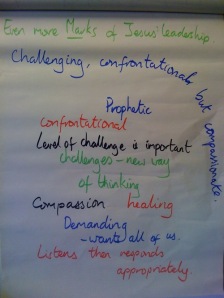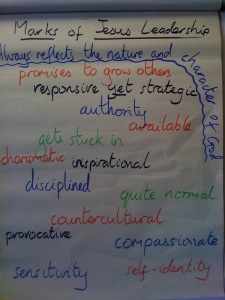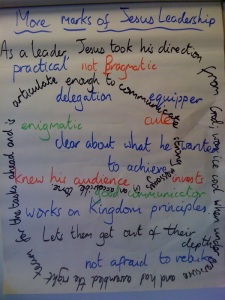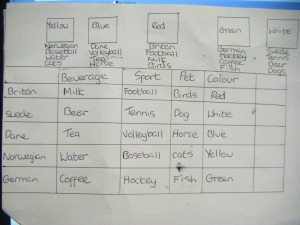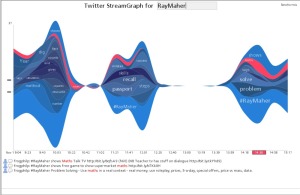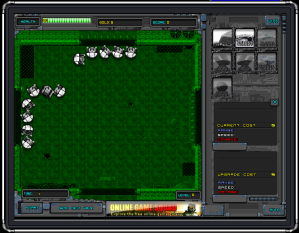Today, UK Maths expert, Ray Maher visited the Athena schools in Birmingham. This is the record of the tweets I made of the event.
5 schools meet for #Athena day at the Beeches for #RayMaher on Raising Standards in Mathematics
#RayMaher still does teaching in school – says best teachers should be in Year 3 – it's the engine room of the school
#RayMaher- best resource in schools is human
#RayMaher – if get foundations right, you get the rest right – times tables by rote – make sure 7 year olds know them off by heart.
#RayMaher wonders why some Year 6 don't have methods for + – x and ÷
#RayMaher says UK is 4th in World in maths (behind, Korea, China, India)
#RayMaher -think of a number, double it, add 5, multiply by 50, +1760, – year you were born. My answer = 738
#RayMaher talks about weighting of maths. 20% U&A, 50% N@C, 20% SSM, 10% DH
#RayMaher questions how secure children are at end of Year 3. (should be level 3)
#RayMaher says if you get the calculation right, you're going to get standards up
#RayMaher – child methodology: in my head? Using drawings / jottings? can I use expanded / compact written method? need calculator?
Teaching one method means less able improve, but more able stay the same… #RayMaher
#RayMaher says models and images in Y1-Y3 are really important
#RayMaher – sort out misconceptions in Year 3
#RayMaher Use number lines to develop mental imagery – then move quickly on to efficient written methods when understanding is secure
#RayMaher advocates using Grid Method – Level 3: 2 dig by 1 dig / Level 4: 2 dig byt 2 dig. Can't do grid method unless timetables secure
#RayMaher gives example of using bus stop for 47 ÷ 8. #fail!!!!
#RayMaher Chunking is repeated subtraction. Egof Y5 non-divider who caught on with chunking 10 lots of 17 on a number line (for 191 ÷ 17)
#RayMaher indicates that children need to OWNtheir one method for +, -, x, ÷. It's not one method per teacher, but one method per child.
#RayMaher – we need progression of calculations policy from foundation stage to Y6. Gives example of very simple policy.
#RayMaher says use calculations policy as displayed curricular targets
#RayMaher use easy-language display of calculations policy to go home for parents
#RayMaher has marvellous counting stick with velco on and 'Mortimer' a puppet who counts up and down.
#RayMaher shows place value mats for Lower KS2. Place value strips for addition. Number squares – 0-99 better than 1-100.
#RayMaher shows viewfinders for number squares. – Algorithmic Ls – great resource for revitalising our number squares
#RayMaher Know 1, get 3 free sheets. Show that one addition fact gives 3 more (1 +, 2 -); 1 multiplication fact gives 3 more facts (1 x, 2÷)
#RayMaher – round tables – look ace. TAs – make up packs of all these FAB resources
#RayMaher – Language pyramids for maths language
#RayMaher – shows kinaesthetic resource for counting
#RayMaher shows Busy Bees good SODA (Start Of the Day Activities) for maths
http://bit.ly/dqDGOZ (it costs £20)
#RayMaher – can you gain 5 minutes during register? Research shows that if you do the children will get cleverer…
#RayMaher advocates buying Nintendo DS to support mental recall – brain traing / maths training
RT @frogphilp: #RayMaher uses numeracy passport to support progression of key skills.
http://bit.ly/8ZEHNl#RayMaher says Wirral Authority give children a 'travel bag' for pre-passport activities where children get stuff when they achieve learning
#RayMaher demonstrates resources that include left-handed children
#RayMaher shows Fiery Ideas Passport kit. Costs £55 but is comprehensive for developing mental maths and instant recall
http://bit.ly/b0FX3h#RayMaher points out that doing bonds to 6, 7, 8, 9 are as important as bonds to 10.
#RayMaher – organisation of passport instant recall means that you can focus on skills for different groups during main activity of lesson
#RayMaher – passport objectives: know all recall by Year 5; more confident at doing sums in heads; key skills for ECM; kids love it!
#RayMaher argues that APP should be standardised – 5 schools on this day – we could meet to standardise our practice
#RayMaher Shows a grid of standardisation
#RayMaher warns that great resources like Pitch and Expectations
http://bit.ly/bn0sia may be removed from website as funding is withdrawn
#RayMaher says learning objectives should be broken down – different buzzwords 'steps to success', 'learning ladders'
#RayMaher example of steps to success for Grid method: partitioning, multiply by 10, recall of times tables, spatial awareness, addition…
#RayMaher shows resource linking AFs – Objectives – Steps to Success – Resources
Robin at #RayMaher day points out that steps to success can become a barrier for teachers if they don't use common sense.
Robin at #RayMaher says that a teacher's job is to make planning exciting and relevant; not to pull planning from the ether.
At #RayMaher day,
http://bit.ly/OuI2Y (Mathletics) is demonstrated. Looks great – Education City rival – Athena have paid for 2 years
#RayMaher endorses Mathletics
"If there's a problem, there's a solution" says #RayMaher about to introduce section on problem solving…
#RayMaher says put maths into context – 'Deal or No Deal' with special offers from supermarkets
#RayMaher Shows problem solving frames – RUCSAC (Read, Understand, Choose an operation, Solve, Answer, Check)
#RayMaher Problem with RUCSAC – no estimation
#RayMaher 6 schools meet #Athena My tweetdeck is keeping me fully informed with @frogphilp chirps. Sounds great. Chirp…
#RayMaher Other Problem solving Frame – RACECAR (Like RUCSAC but with estimation)
#RayMaher Problem Solving – Use maths in a real context – real money, use roleplay, prices, 5-a-day, special offers, price vs mass, data.
#RayMaher – lesson idea work out how much Cola is replaced by ice at Macdonalds (Tip: answer = about 67%)
#RayMaher – Could use Flips to film children speaking about conceptions / misconceptions to promote class discussion
#RayMaher If there are 196 legs and 126 eyes at a dog show, how many people and dogs are present?
#RayMaher shows beginning of Charlie and the Chocolate Factory and asks: What maths can you see?
#RayMaher Logic and Reasoning is possible area of weakness in UK primary schools
#RayMaher shows progression for making decisions – build up complexity from simple decisions
#RayMaher points out you can get free education resources about London Olympics from
http://bit.ly/bCLD21#RayMaher shows Professor Problemo – interactive software and resource sheets (£25)
http://bit.ly/9atnwC#RayMaher recommends free resource: Mathematical Challenges for able pupils
http://bit.ly/apfZxn #gtchat #mathchat
#RayMaher recommends Gecko Maths
http://bit.ly/aIFBqj Korean problem solving that has contributed to SK being number 1 in maths
